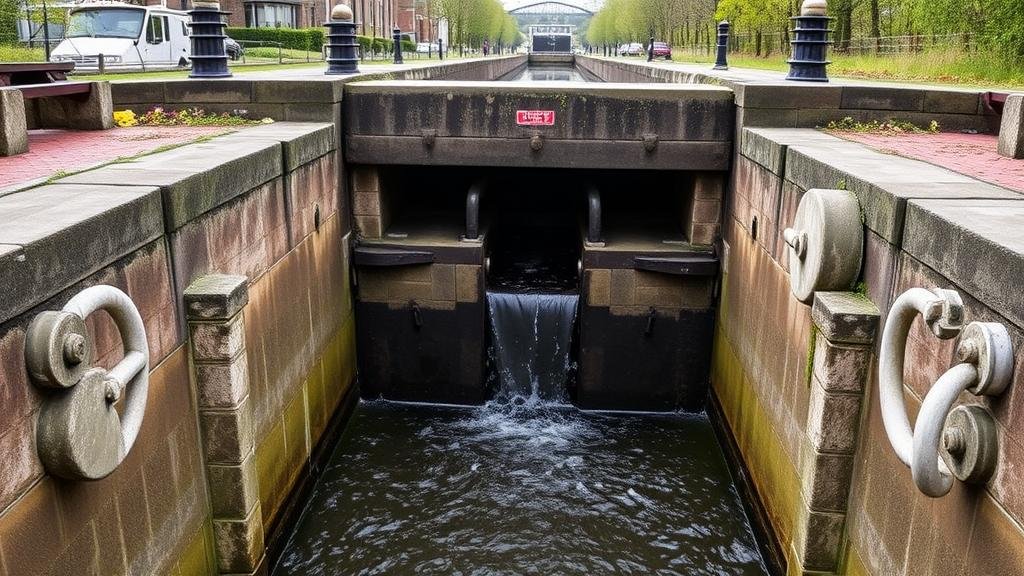Tracing Old Canal Lock Mechanisms for Industrial Artifact Discoveries
Tracing Old Canal Lock Mechanisms for Industrial Artifact Discoveries
The investigation of old canal lock mechanisms offers a fascinating glimpse into industrial heritage and the technological advancements of past societies. This paper aims to explore the significance of these artifacts, their functionality, and their implications for understanding industrial developments, infrastructure, and economic activities between the 18th and 19th centuries. Through analyzed case studies, this research will highlight the importance of canal locks in facilitating trade and transportation, while advocating for heritage preservation in the face of modern development.
The Historical Context of Canal Locks
Canal locks emerged in Europe during the early 17th century, primarily in response to the need for efficient transport of goods across varying terrains. While ancient civilizations utilized primitive forms of locks, the introduction of more sophisticated mechanisms during the Industrial Revolution significantly transformed trade routes. Notably, the opening of the Bridgewater Canal in England in 1761 marked a crucial milestone, reducing transportation costs and fostering industrial growth.
According to the Canal & River Trust, the UK alone has over 2,000 locks, many of which showcase unique engineering designs from various periods, reflecting the technological advancements of their time (Canal & River Trust, 2021).
Mechanisms of Canal Locks
Canal locks operate on a simple principle of water-level adjustment, utilizing a system of gates and sluices to manage the flow of water. The mechanisms typically comprise the following components:
- Lock Gates: These large structures swing open and shut to allow vessels to enter or exit. Historically, wooden gates were initially used, later replaced by iron and steel for durability. For example, the Anderton Boat Lift in Cheshire, completed in 1875, features intricate iron gates that demonstrate advanced engineering skills.
- Counterweights: Often designed to balance the weight of the gates, counterweights assist in opening and closing the gates with minimal manual labor. The use of pulleys and gears became common in the design of more complex locks.
Case Study: The Erie Canal
The Erie Canal, completed in 1825, serves as an exemplary case study for the importance of canal locks in industrial development. Spanning over 363 miles across New York State, it required 83 locks to manage the elevation changes of the landscape. The system of locks dramatically reduced travel time and improved trade efficiency.
In 1817, the construction of the Erie Canal was initiated to connect the Great Lakes with the Atlantic Ocean, effectively transforming New York City into a global trading hub. Historical records indicate that the canal resulted in freight rates dropping by 95%, leading to an economic boom in the region (New York State Canal Corporation, 2020).
Preservation Efforts and Industrial Heritage
As industrial artifacts, canal lock mechanisms are valuable sources of historical information. But, many of these structures are at risk due to neglect and urban development. Preservation initiatives, such as the restoration of the Old Lachine Canal in Montreal, are critical to safeguard these remnants of engineering prowess. This restoration project aligns with UNESCO’s efforts to recognize and protect industrial heritage sites across the globe.
Challenges and Future Directions
Despite the significance of canal locks as industrial artifacts, several challenges impede their preservation, including:
- Urban Development: Increasing urbanization often results in the dismantling of historical sites to make way for new infrastructure.
- Lack of Funding: Many preservation projects struggle to secure funding, limiting their capacity to restore or maintain these structures.
Future research should focus on multi-disciplinary approaches combining engineering, history, and conservation science to develop effective strategies for preserving these important industrial artifacts.
Conclusion
The tracing and study of old canal lock mechanisms provide valuable insights into past industrial practices and engineering advancements. Through restoring these relics, society gains a deeper understanding of how transportation shaped economic development. Continued efforts to preserve such artifacts will not only honor the technological achievements of previous generations but also inspire future innovations in infrastructure and public service.
As stewards of industrial heritage, it remains imperative for researchers, policymakers, and community stakeholders to work collectively in safeguarding these historical treasures for future generations.
References
- Canal & River Trust. (2021). Understanding UK canals: A Historical Overview. Retrieved from [insert URL]
- New York State Canal Corporation. (2020). History of the Erie Canal. Retrieved from [insert URL]



